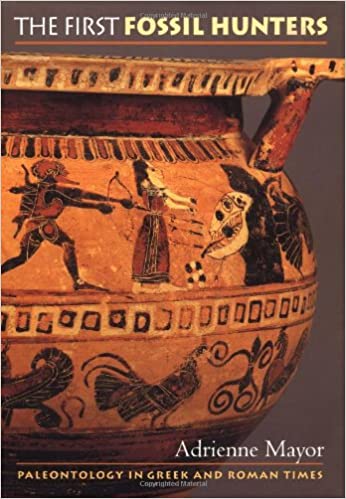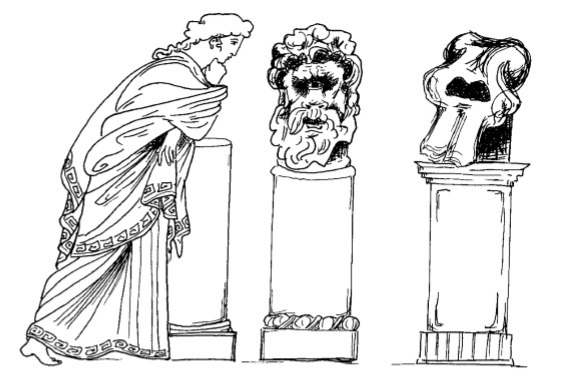by Adrienne Mayor

It’s amazing to think that this book is 22 years old, and is now mainstream. When it was first published in Y2K, this book on palaeontology in the ancient world was, aptly enough, a groundbreaker.
When Adrienne Mayor first became interested in the numerous classical references to the bones of giants, heroes and dragons, they had been widely dismissed as fantasies. Mayor was the first person to really take them seriously, and to realise that the stories might refer to actual fossil bones and that genuine palaeontology had fed Ancient Greek, Egyptian and Chinese mythology.
The Mediterranean, as it turns out, is very geologically active, and laced with fossils from the last 25 million years, which easily become exposed by landslides and earthquakes. In Greece in particular this fed into a kind of feedback loop. A farmer would uncover huge bones, but in the Mediterranean these would generally be from giant mammals rather than dinosaurs, especially pygmy elephants and giant giraffes, and would often be jumbled up and disarticulated by geological activity. If the skull wasn’t with the bones then one mammalian femur or scapula looks much like another, so they would assume the bones were those of some ancient hero, and would rebury them in a coffin, with great ceremony and grave goods. Hundreds of years later, after the original discovery had been forgotten, someone else would dig up the coffin full of huge fossil bones, and the fact that they were in a coffin, with grave goods, would prove that they were those of a giant human hero.
This misidentification of the bones of extinct megafauna as being those of human giants led to a kind of end-of-days, depressive world view, because the Greeks took it as evidence that everything in the world, including humans, was dwindling from a former greatness into a dying fading away. Their mythology of gigantic ancient heroes was probably built up on these bones in the first place, then the discovery of more bones was seen as confirming the mythology. The Romans then bought into the myth, and the fossil bones of giant beasts became the prized possessions of temples and of rich men’s private museums.
Meanwhile, in China the presumed “dragon bones” people dug up in the fields got used in Chinese medicine (of course). Fossils became a winter crop for the farmers, and there grew up a brisk trade in fake fish-fossils. In Mongolia, the fresh-looking, well-preserved Protoceratops skeletons which littered the deserts were assumed to have come from animals which had died very recently, fuelling legends of gold-guarding griffins, and similarly fresh-looking dinosaur bones from the hills of India were assumed to have come from extant dragons, while black fossil bones in Egypt were relics of Set and of the scattered flesh of Osiris.

Mayor makes a fascinating and convincing case for the importance of fossil finds to the ancient world. The book itself can be a little dry, a bit like the “begats” in the Bible, since there are so many quotes from Ancient Greek writers describing how the ground broke open and this or that bone miraculously appeared. But the author’s lively little drawings break it up a bit, and when the book first came out in Y2K it shed an entirely new light on an important aspect of ancient history and culture.
I used The First Fossil Hunters as one of my main sources for the early history of evolutionary thought in my essay Darwin was Just an Old, Dead White Guy, where you will find passages discussing some specific details from Mayor’s book.
